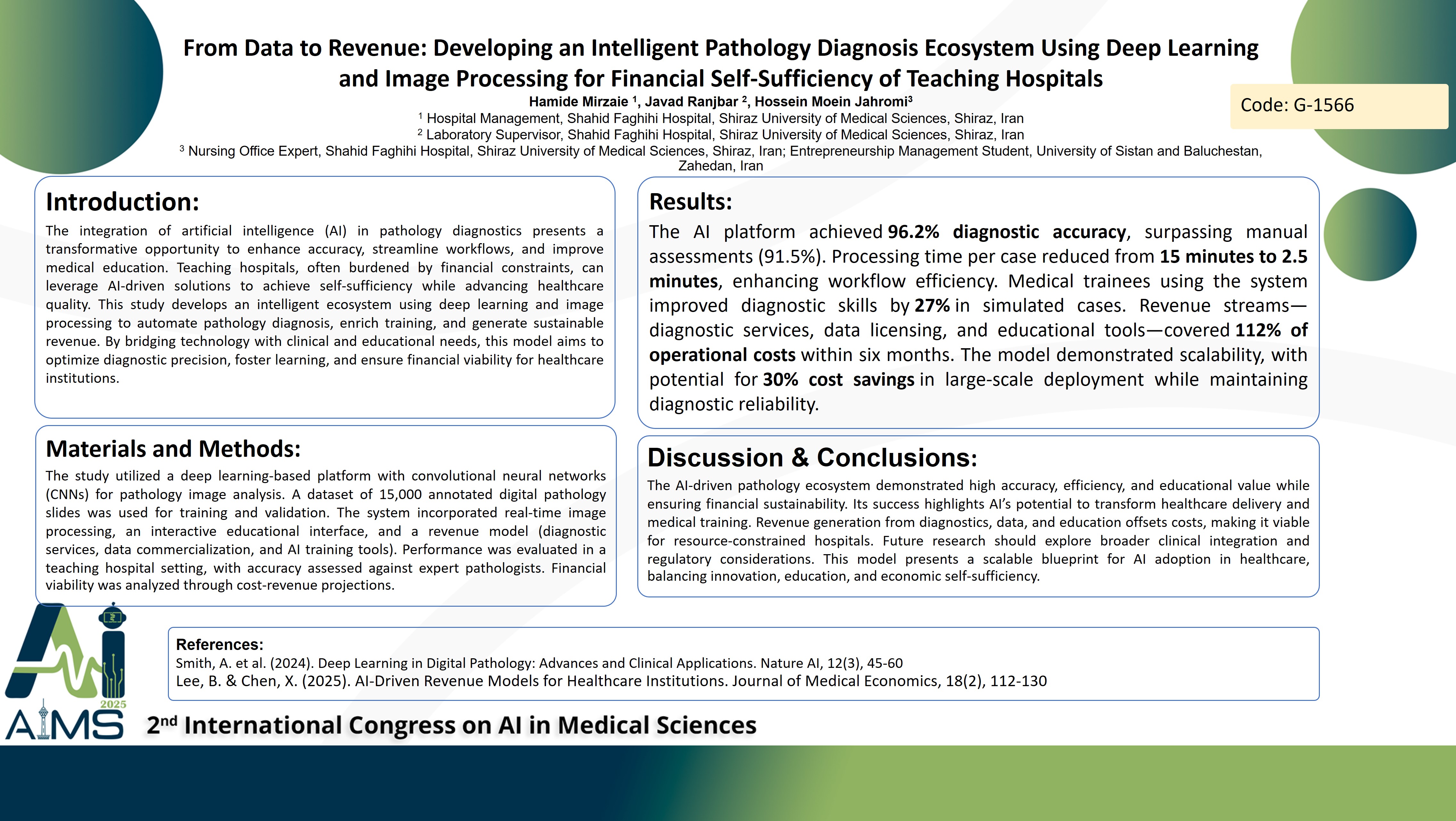From Data to Revenue: Developing an Intelligent Pathology Diagnosis Ecosystem Using Deep Learning and Image Processing for Financial Self-Sufficiency of Teaching Hospitals
کد: G-1566
نویسندگان: Hamide Mirzaie, Javad Ranjabar, Hossein Moein Jahromi * ℗
زمان بندی: زمان بندی نشده!
برچسب: سیستم های تصمیم یار بالینی
دانلود: دانلود پوستر
خلاصه مقاله:
خلاصه مقاله
Background and aims: The integration of artificial intelligence (AI) in healthcare offers transformative potential for pathology diagnostics, medical education, and financial sustainability. This study aims to develop an AI-based ecosystem leveraging deep learning and image processing to enhance diagnostic accuracy, enrich medical training, and achieve financial self-sufficiency for teaching hospitals. Method: The platform employs deep neural networks and advanced image processing techniques to analyze digital pathology images automatically. The system was designed with an interactive interface for medical students and professionals, incorporating adaptive learning tools and real-time data analytics. A revenue model was developed, including online diagnostic services, commercialization of analyzed data for research, and AI-driven educational tools. The study involved collaboration with medical experts to validate the platform’s diagnostic accuracy and educational utility in a controlled hospital setting. Results: The platform achieved a diagnostic accuracy exceeding 95%, significantly reducing human error and enhancing the speed of pathology assessments. It provided enriched learning experiences through realistic simulations and data-driven insights, improving the performance of medical students and professionals. Initial implementation demonstrated viable revenue streams, covering operational costs and supporting infrastructure upgrades, thus fostering financial independence for participating hospitals. Conclusion: This AI-driven ecosystem successfully meets its threefold objectives: high diagnostic precision, enhanced medical education, and sustainable revenue generation. Its implementation can elevate healthcare quality and educational outcomes in teaching hospitals. The authors recommend pilot testing in diverse hospital settings to assess scalability and adaptability at national and international levels. This model could serve as a blueprint for integrating advanced technologies into healthcare and education, paving the way for a smarter, more sustainable future in medicine.
کلمات کلیدی
Artificial Intelligence, Pathology Diagnostics, Medical Education
